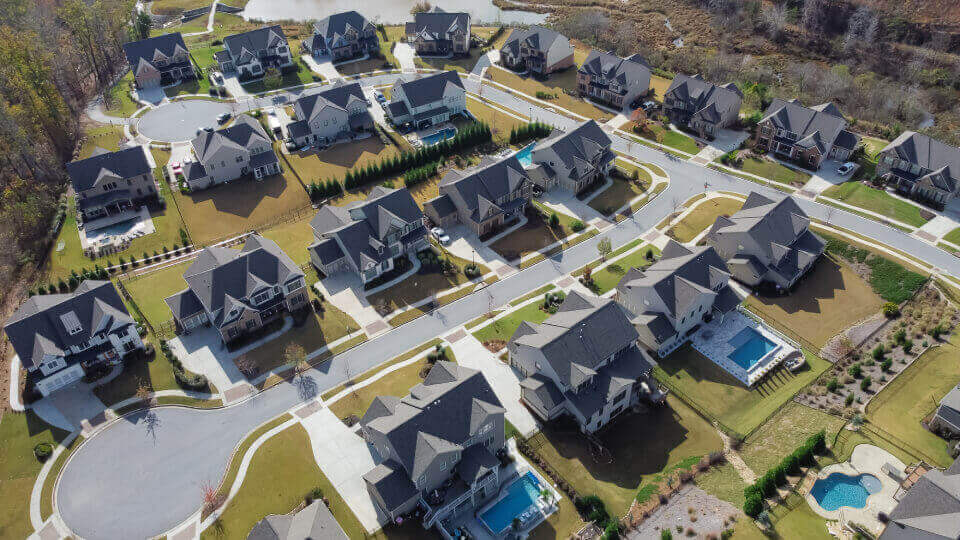Living in a homeowners association (HOA) community comes with certain responsibilities, including adhering to specific rules and regulations. While some homeowners view these rules as restrictive, they play a crucial role in maintaining property values, ensuring community harmony, and enhancing the overall living experience.
Understanding the purpose and structure of HOA regulations helps homeowners navigate their responsibilities while benefiting from the protections and amenities their community offers. This article explores why HOA rules exist, how they are enforced, and what homeowners need to know to stay compliant.
Why Do HOAs Have Rules and Regulations?
HOA rules are designed to create a fair and organized community where residents can enjoy their properties without disruptions. These regulations help:
1. Preserve Property Values
Consistent neighborhood standards prevent neglect and ensure that homes remain attractive to buyers. Rules regarding exterior maintenance, landscaping, and common areas contribute to long-term property appreciation.
2. Maintain a Peaceful Living Environment
HOA guidelines help prevent disputes over issues like noise levels, parking, and pet management. By setting clear expectations, HOAs reduce conflicts between neighbors.
3. Protect Shared Resources and Amenities
Communities with pools, parks, or clubhouses require rules to ensure fair use and proper maintenance. HOA regulations help manage these shared spaces efficiently.
Common Types of HOA Rules
Every HOA has its own set of governing documents, but most associations regulate similar aspects of community living.
1. Architectural and Exterior Guidelines
HOAs often have specific requirements regarding home exteriors, including:
- Paint colors and siding materials.
- Landscaping and lawn maintenance.
- Fence height and design.
- Home additions and exterior modifications.
Before making changes to their property, homeowners typically need approval from the HOA board or an architectural review committee.
2. Parking and Vehicle Restrictions
Many associations set rules about where residents and guests can park. Common regulations include:
- No parking on lawns or sidewalks.
- Restrictions on commercial vehicles or RVs.
- Guest parking limitations.
These rules help keep streets clear and maintain the neighborhood’s appearance.
3. Noise and Nuisance Policies
To ensure a quiet and enjoyable environment, HOAs may enforce regulations regarding:
- Quiet hours during late-night and early-morning hours.
- Limitations on loud music, parties, or construction noise.
- Pet noise management requirements.
4. Short-Term Rental and Leasing Rules
Some HOAs restrict or regulate short-term rentals through platforms like Airbnb to maintain community stability. Common policies include:
- Minimum rental periods for tenants.
- Limits on the number of rental properties allowed within the HOA.
- Registration requirements for landlords.
5. Trash and Recycling Regulations
To prevent clutter and maintain cleanliness, HOAs may establish rules regarding:
- When and where trash bins can be placed for pickup.
- Proper disposal of large or hazardous waste.
- Recycling guidelines.
How HOA Rules Are Created and Enforced
1. Governing Documents and Legal Authority
HOA rules are established through official documents, including:
- Covenants, Conditions, and Restrictions (CC&Rs): Outline homeowners’ responsibilities and HOA authority.
- Bylaws: Detail HOA operations, including voting rights and board member duties.
- Rules and Regulations: Additional policies governing daily community life.
Homeowners agree to follow these documents when purchasing property in an HOA community.
2. The Role of the HOA Board
The HOA board, typically composed of elected homeowners, oversees rule enforcement and makes policy updates as needed. Their responsibilities include:
- Reviewing rule violations.
- Approving architectural modifications.
- Managing disputes between residents.
3. Violation Notices and Enforcement Procedures
When a homeowner violates a rule, the HOA may take the following steps:
- Warning or Courtesy Notice: A friendly reminder to address the issue.
- Formal Violation Notice: A written notice detailing the infraction and deadline for resolution.
- Fines or Penalties: If the issue remains unresolved, the HOA may impose fines.
- Legal Action or Liens: In extreme cases, unresolved violations may result in legal action.
Enforcement policies vary by community, but clear and consistent application of rules is essential for maintaining fairness.
Homeowner Rights and Responsibilities
1. Understanding HOA Documents
Before moving into an HOA community, homeowners should review all governing documents to understand their obligations and rights.
2. Attending HOA Meetings
Participating in meetings allows homeowners to:
- Stay informed about rule changes.
- Voice concerns or suggestions.
- Engage in decision-making processes.
3. Challenging Unfair or Outdated Rules
If a rule seems unreasonable, homeowners can:
- Request clarification from the HOA board.
- Propose amendments through a formal petition.
- Seek mediation or legal advice if necessary.
Many HOAs allow residents to propose rule modifications through voting or board approval.
The Role of Professional HOA Management
Managing an HOA requires time, expertise, and impartial decision-making. Many associations work with a professional HOA management company to ensure smooth operations.
1. Consistent Rule Enforcement
A professional management team ensures that all residents are treated fairly when it comes to rule enforcement, reducing the risk of favoritism or selective application.
2. Handling Administrative Tasks
From processing violation notices to maintaining records, HOA management companies handle day-to-day operations efficiently.
3. Providing Legal and Financial Guidance
Professionals help ensure that rules comply with local laws and assist with budget planning to keep the HOA financially stable.
How to Stay Compliant with HOA Rules
1. Read the Community Guidelines
Familiarizing yourself with HOA rules prevents accidental violations. New homeowners should review all documents upon moving in.
2. Seek Approval for Property Changes
Before making exterior modifications or landscaping updates, submit any required applications to the HOA for approval.
3. Communicate with HOA Management
If unsure about a rule or requirement, reach out to the HOA board or management team for clarification.
4. Pay HOA Dues on Time
Staying current on HOA fees helps the association maintain services and amenities without financial difficulties.
Adapting HOA Rules to Meet Community Needs
Over time, community needs may change, requiring rule adjustments. Common reasons for updating HOA rules include:
- Changes in local or state regulations.
- Resident feedback on outdated policies.
- The need to accommodate new technology, such as electric vehicle charging stations.
Homeowners can participate in the rule-change process by attending meetings, joining committees, or submitting formal proposals.
Conclusion
HOA rules and regulations provide structure and consistency to communities, ensuring that properties remain well-maintained and enjoyable for all residents. While enforcement is necessary, homeowners also have rights and opportunities to engage with their HOA to shape community policies.
Professional HOA management services, such as those provided by NTX Management Group, help streamline rule enforcement, maintain financial stability, and foster a positive living environment. By understanding HOA rules and working collaboratively with management, homeowners can contribute to a well-organized and thriving community.
Read more articles in business



































